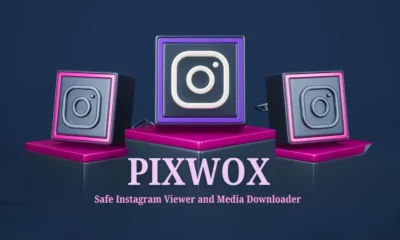HOME IMPROVEMENT
Roofing Warranties Explained: What Homeowners Need to Know

When investing in a roof installation or roof replacement, one of the most important aspects that homeowners should consider is the roofing warranty. A roofing warranty provides peace of mind by ensuring that your investment is protected against unexpected defects, material failures, and potential workmanship issues. However, not all warranties are created equal, and understanding the different types of roofing warranties can help you make informed decisions when choosing a new roof.
In this article, we’ll break down the different types of roofing warranties, explain what they cover, and provide guidance on how to ensure your roof is protected. Whether you’re installing a new roof or replacing an old one, having a solid understanding of roofing warranties is essential for safeguarding your home.
1. Types of Roofing Warranties
Roofing warranties come in several different forms, and each offers varying levels of protection for homeowners. The two primary categories of warranties are manufacturer warranties and contractor warranties. Both play crucial roles in protecting your roof, but they cover different aspects of the roofing system.
a. Manufacturer Warranties
A manufacturer warranty (also known as a material or product warranty) covers defects in the roofing materials themselves. This type of warranty is provided by the company that manufactures the roofing materials, such as shingles, tiles, or metal panels. If a defect in the material causes a failure, the manufacturer is responsible for replacing or repairing the affected roofing components.
Most roofing materials come with standard manufacturer warranties that cover material defects for a set period, typically ranging from 20 to 50 years, depending on the type of material. For example, asphalt shingles may have a 25-year warranty, while metal roofing or slate tiles can come with warranties of 50 years or more.
It’s important to note that manufacturer warranties only cover defects in the material itself, not issues caused by improper installation or other factors.
b. Contractor Warranties
A contractor warranty (also known as a workmanship warranty) covers the quality of the installation work performed by the roofing contractor. If there are any issues with the way the roof was installed—such as improper sealing, misaligned shingles, or poorly installed flashing—the contractor is responsible for fixing the problem within the warranty period.
Contractor warranties vary in length depending on the company. Some contractors offer a 1-year warranty, while others may provide warranties lasting 5 or 10 years. Reputable companies, such as Best Choice Roofing, often provide robust contractor warranties to ensure that homeowners are confident in the quality of their roof installation.
2. What Roofing Warranties Cover
Understanding what your roofing warranty covers is essential for knowing when you’re eligible for repairs or replacements. Different warranties cover different aspects of the roofing system, and it’s important to review the details carefully.
a. Material Defects
Manufacturer warranties primarily cover material defects, which refer to any flaws in the roofing products that affect their performance. These defects might include issues like curling shingles, granule loss, cracking, or warping that occurs prematurely due to manufacturing errors. If your roofing material fails within the warranty period due to a defect, the manufacturer is responsible for providing a replacement.
It’s important to understand that manufacturer warranties typically don’t cover damage caused by external factors, such as weather events, falling debris, or improper installation.
b. Workmanship Issues
Contractor warranties cover workmanship issues, such as installation mistakes or poor craftsmanship. If your roof leaks, shifts, or experiences other problems due to faulty installation, the contractor is responsible for repairing or redoing the work.
For example, if flashing is improperly installed and water seeps into the roof deck, causing leaks, the contractor’s warranty should cover the necessary repairs. However, if the issue is caused by material failure rather than improper installation, the manufacturer warranty would apply instead.
c. What’s Typically Not Covered
It’s important to be aware of what roofing warranties typically don’t cover. For example, manufacturer warranties don’t usually cover damage caused by extreme weather conditions, such as hurricanes, tornadoes, or hailstorms. Additionally, warranties may not cover normal wear and tear, aesthetic changes like fading, or damage caused by poor maintenance.
Understanding these limitations can help you avoid confusion down the line and ensure that you take proper care of your roof to prevent avoidable issues.
3. How to Maintain Your Roof Warranty
To keep your roofing warranty valid, you’ll need to follow certain maintenance guidelines set by the manufacturer or contractor. Neglecting your roof’s upkeep or making unauthorized changes can void your warranty, leaving you responsible for any future repairs.
a. Regular Roof Inspections
Most roofing warranties require regular inspections to remain valid. Homeowners should schedule annual or bi-annual roof inspections with a qualified roofing contractor to check for any damage, wear, or potential issues. Inspections help catch small problems before they escalate into costly repairs, and they demonstrate that you’ve been proactive in maintaining your roof.
If you notice any damage—such as missing shingles, leaks, or signs of water damage—contact a roofing professional immediately. Addressing issues early ensures that your warranty remains intact and prevents further damage.
b. Proper Maintenance
Maintaining your roof according to the manufacturer’s guidelines is key to keeping your warranty valid. This includes regular tasks like cleaning your gutters, removing debris from the roof, and addressing leaks promptly. Failing to keep your roof in good condition could void your warranty, especially if the damage is a result of neglect.
It’s also important to avoid walking on your roof unless necessary, as foot traffic can damage certain roofing materials and lead to warranty claims being denied.
c. Avoid Unauthorized Repairs
Another common cause of voided warranties is making unauthorized repairs or modifications to your roof. If your roof needs repairs, it’s crucial to hire a licensed roofing contractor who is certified to work with the materials covered by your warranty. DIY repairs or hiring unqualified contractors could lead to improper repairs that void your warranty.
For homeowners in Detroit, Best Choice Roofing of East Detroit offers professional roofing services that ensure your repairs are done correctly, preserving your warranty and the integrity of your roof.
4. Transferring a Roofing Warranty
One question that often arises is whether a roofing warranty can be transferred if you sell your home. Many roofing warranties, particularly manufacturer warranties, are transferable to new homeowners. This adds value to your home and provides peace of mind to the buyer, knowing that the roof is still protected.
a. Manufacturer Warranties
Most manufacturer warranties allow for one-time transfers, meaning that the warranty can be passed from the original homeowner to the first subsequent buyer. Some manufacturers may charge a fee for the transfer, and it’s important to notify them of the transfer within a specific timeframe after the sale of the home.
Having a transferable warranty can be a strong selling point when listing your home, as it reassures buyers that the roof will continue to be protected after they move in.
b. Contractor Warranties
Some contractor warranties are also transferable, though this depends on the roofing company. If you’re planning to sell your home, it’s worth asking your contractor whether their warranty is transferable and what steps are needed to complete the transfer process.
5. Extended Roofing Warranties: Are They Worth It?
Many roofing manufacturers and contractors offer extended warranties that go beyond the standard coverage period. Extended warranties provide additional protection for homeowners who want peace of mind for the long term.
a. Manufacturer Extended Warranties
Manufacturer-extended warranties often cover both materials and labor for a longer period, providing more comprehensive protection. These warranties may cover additional components of the roofing system, such as underlayment, flashing, and vents.
If you’re installing a new roof and plan to stay in your home for many years, investing in an extended warranty can provide extra protection against unexpected issues. For example, a manufacturer might offer a 25-year warranty for materials but an extended 50-year warranty that covers both materials and labor.
b. Contractor Extended Warranties
Some contractors also offer extended workmanship warranties, providing coverage beyond the standard 1- or 2-year period. This ensures that any installation-related issues are covered for a longer time, giving you confidence in the quality of the work.
Extended warranties are often worth considering if you’re looking for long-term peace of mind, but it’s important to review the details carefully to understand exactly what is covered.
Conclusion
Understanding your roofing warranty is essential for protecting your home and ensuring that your roof remains in good condition for years to come. Whether you’re investing in a new roof installation or roof replacement, taking the time to review the warranty details and knowing what is covered can help you avoid unexpected costs and complications down the road.
With proper maintenance, regular inspections, and by working with a trusted roofing professional like Best Choice Roofing of East Detroit, you can ensure that your roof is protected and that any issues are addressed promptly and effectively. A solid warranty offers peace of mind and ensures that your home remains safe, comfortable, and secure no matter the weather.
-

 BIOGRAPHY7 months ago
BIOGRAPHY7 months agoBehind the Scenes with Sandra Orlow: An Exclusive Interview
-

 HOME1 year ago
HOME1 year agoDiscovering Insights: A Deep Dive into the //vital-mag.net blog
-

 HOME1 year ago
HOME1 year agoSifangds in Action: Real-Life Applications and Success Stories
-

 BIOGRAPHY1 year ago
BIOGRAPHY1 year agoThe Woman Behind the Comedian: Meet Andrew Santino Wife




























